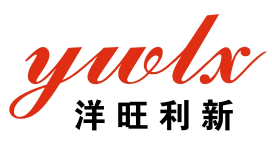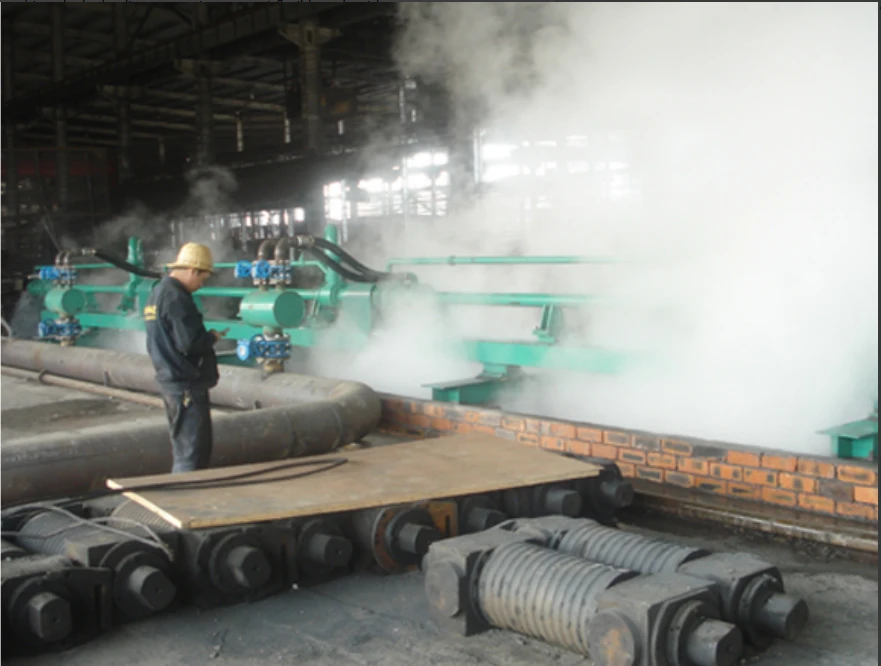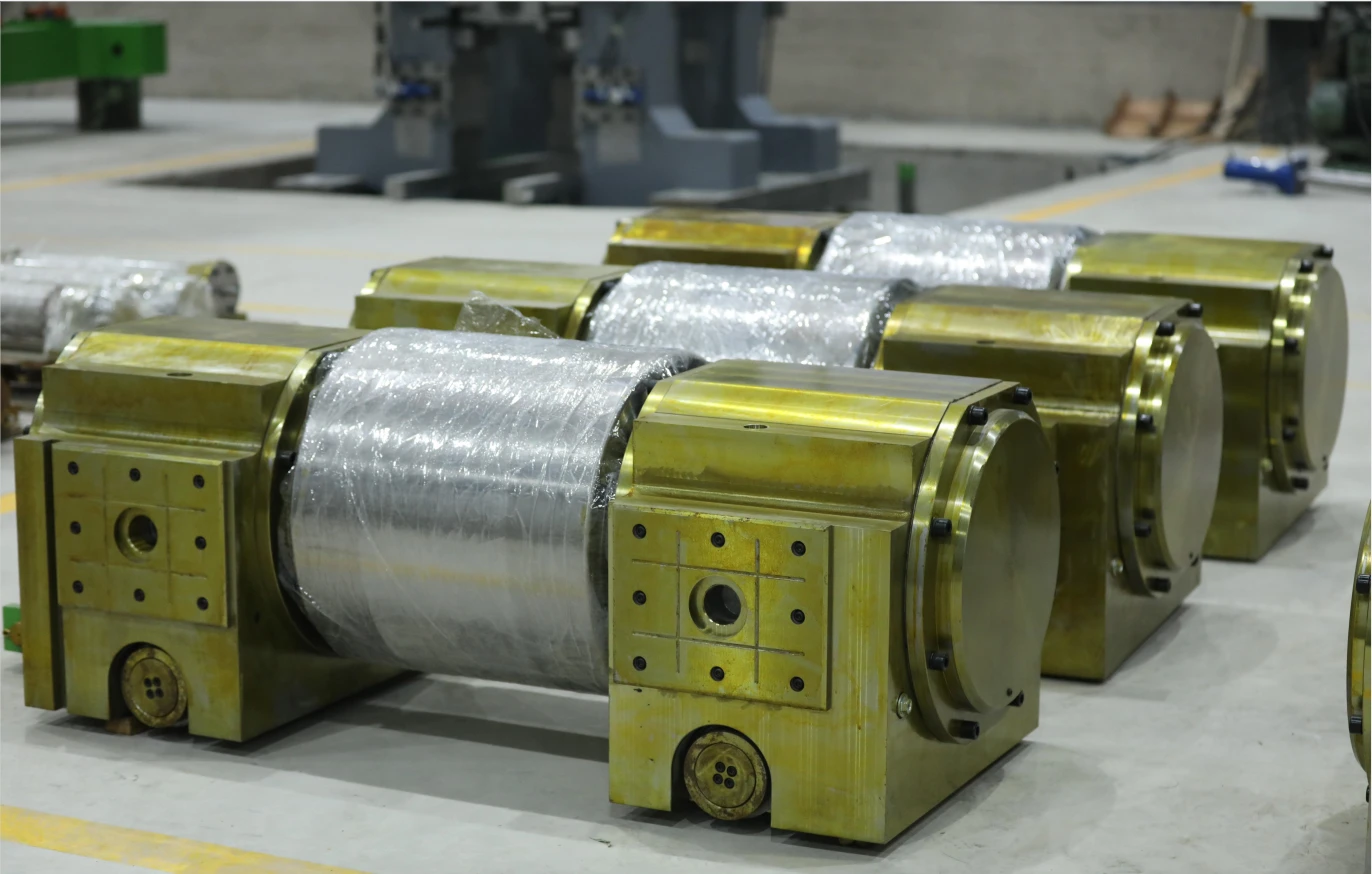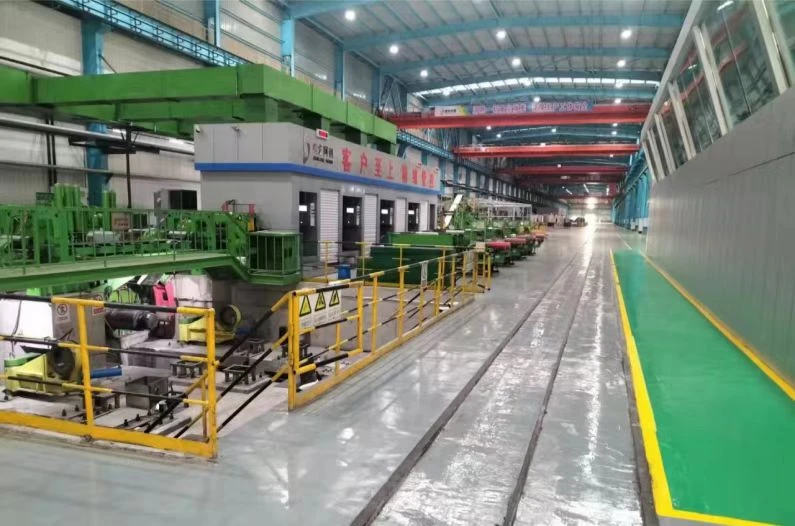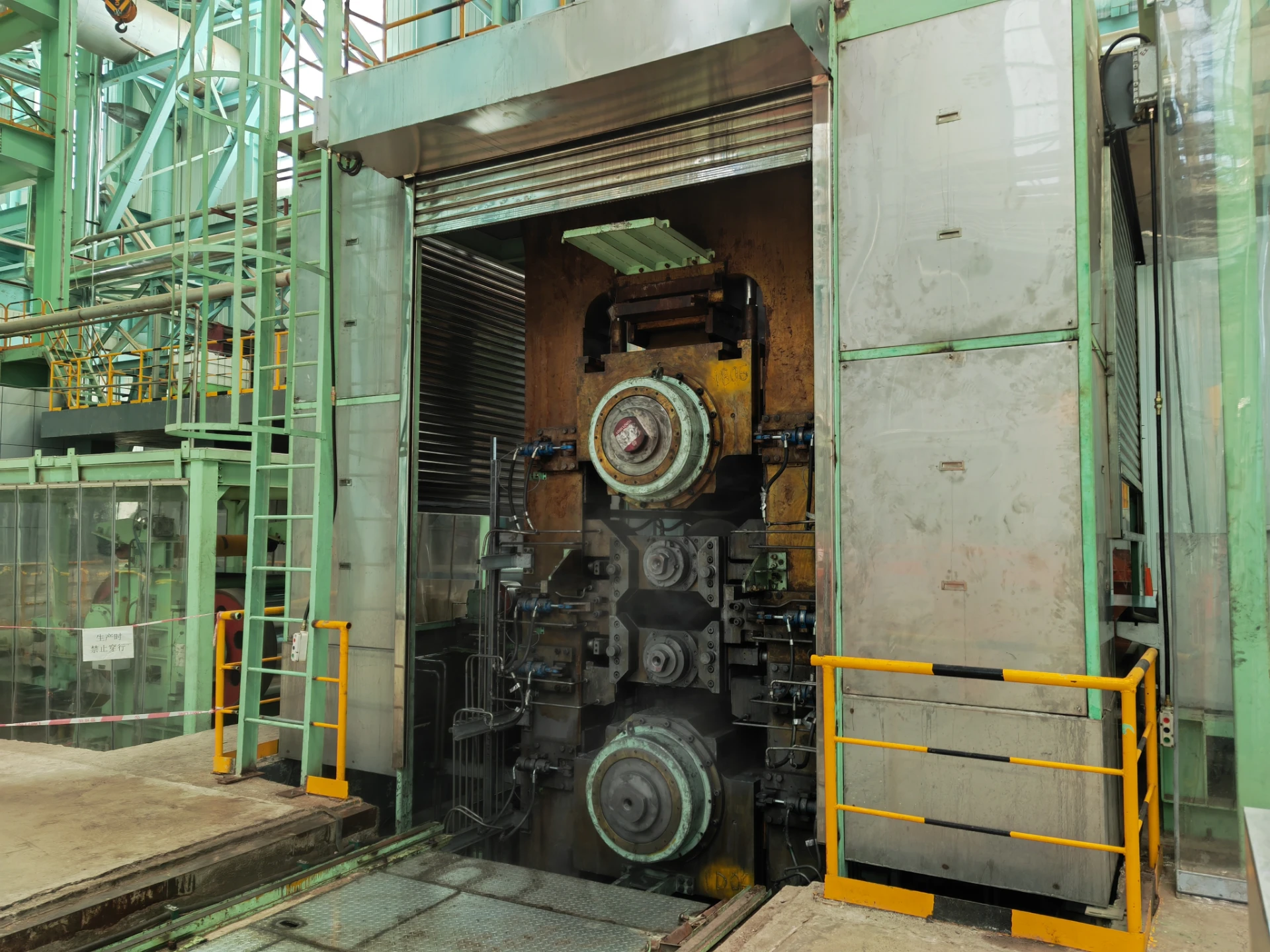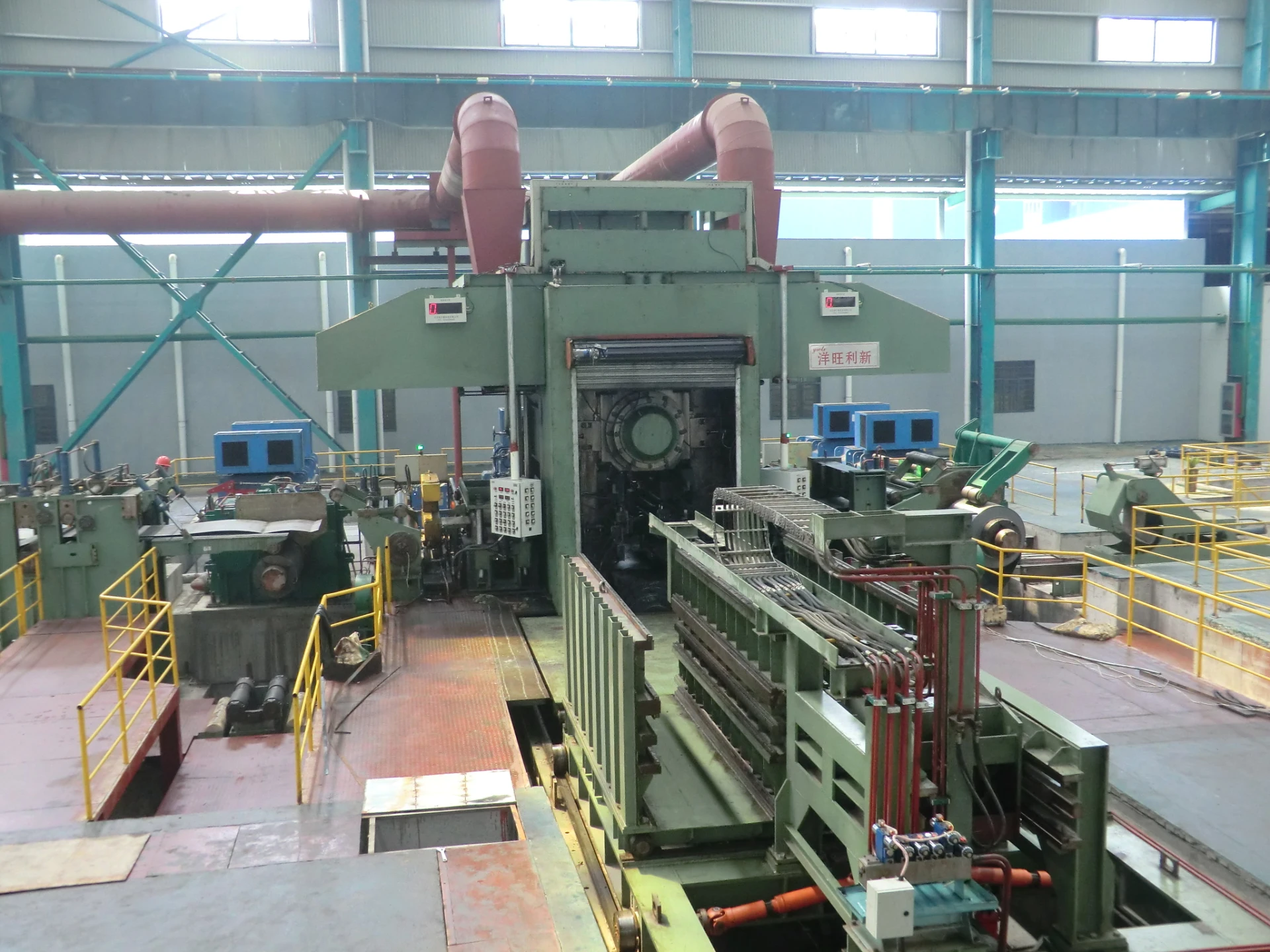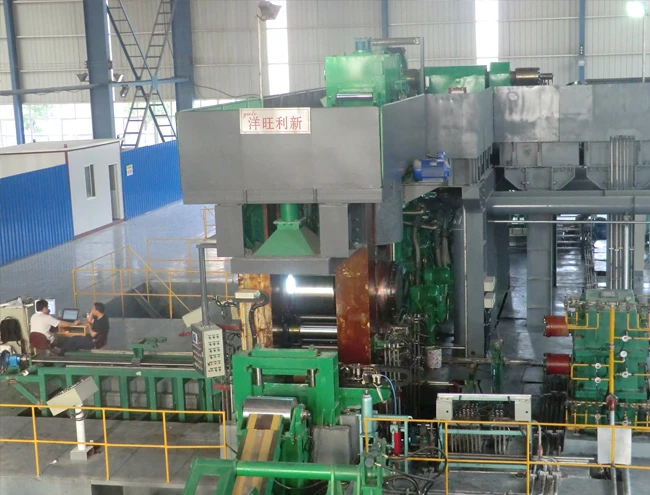
Reversible Rolling Mills: Efficient Hot & Cold Strip Production
The Transformative Impact of Reversible Rolling Mills in Modern Steel Production
The global steel industry continues to evolve, driven by demands for higher quality, greater efficiency, and sustainable production. At the forefront of this transformation is the reversible rolling mill, a pivotal technology central to the production of both hot and cold rolled steel products. This sophisticated machinery enables the continuous reduction of material thickness through multiple passes, with the material reversing direction after each pass. This design offers unparalleled flexibility and precision, making it indispensable for producing a wide range of flat products, from thin gauge foils to thick plates used in critical infrastructure. Unlike conventional tandem mills that process material in a single direction, the reversible configuration allows for dynamic adjustments in roll gap, speed, and tension for each pass, optimizing mechanical properties and surface finish. This adaptability is particularly crucial when dealing with diverse alloys and demanding specifications, ensuring that the final product meets stringent industry standards such as ASTM, JIS, and EN. The economic implications are profound, as these mills facilitate higher yield rates, reduced material waste, and lower energy consumption per ton of steel produced, contributing significantly to a more sustainable and cost-effective operation. The ability to achieve precise thickness control and superior flatness in a compact footprint makes the reversible mill a cornerstone of modern metallurgical processes, providing a competitive edge to steel manufacturers worldwide. Its role extends across various sectors, from the automotive and aerospace industries requiring high-strength, lightweight materials, to the construction and energy sectors where durability and performance are paramount. This continuous innovation ensures that the reversible rolling mill remains a critical asset for future-proof steel production facilities globally.
Detailed Manufacturing Process & Technical Excellence of Hot/Cold Rolling Production Lines
The manufacturing of components for a reversible rolling mill, particularly for our Hot/Cold Rolling Production Lines, adheres to rigorous engineering principles and quality control measures. Each critical component, from the robust mill stands and work rolls to the intricate hydraulic systems and advanced automation controls, undergoes a meticulous production journey. The process typically begins with the selection of high-grade materials, such as specialized alloy steels for rolls and heavy-duty cast iron or fabricated steel for housings, chosen for their superior strength, wear resistance, and thermal stability. For large structural elements like mill housings, precision casting or forging techniques are employed to ensure optimal grain structure and freedom from defects. These components then proceed to advanced CNC machining centers, where complex geometries are precisely milled, bored, and ground to tolerances measured in microns, critical for achieving the precise alignment and operational stability required for high-performance rolling. Subsequent heat treatment processes, including quenching and tempering, are applied to enhance hardness and toughness, prolonging the operational lifespan of wear-prone parts. Surface finishes, particularly for rolls, are achieved through superfinishing techniques to minimize friction and improve strip quality. Throughout these stages, stringent inspection standards are applied, including non-destructive testing (NDT) such as ultrasonic and magnetic particle inspections, alongside dimensional verification using CMMs (Coordinate Measuring Machines), all in compliance with international standards like ISO 9001 and ANSI/ASME. The lifespan of our rolling mill components is engineered for decades of reliable service, typically exceeding 20-30 years with proper maintenance, significantly reducing total cost of ownership for clients in the petrochemical, metallurgy, and water supply/drainage sectors. In typical application scenarios, such as the production of precision automotive panels or high-strength structural beams, our mills demonstrate exceptional energy efficiency due to optimized drive systems and advanced lubrication, often achieving 15-20% energy savings compared to older models. Furthermore, the robust material selection and surface treatments provide superior corrosion resistance, critical in aggressive industrial environments, ensuring consistent output quality and operational longevity. The integrity of every manufactured part is paramount to the overall performance and reliability of the complete reversible rolling mill system.

Technical Advantages and Application Versatility
The technical prowess of a modern reversible rolling mill lies in its advanced control systems, which integrate Automatic Gauge Control (AGC), Automatic Flatness Control (AFC), and precise tension control. AGC systems, typically hydraulic, respond instantly to changes in strip thickness, ensuring tolerances as fine as ±2 microns, crucial for high-precision applications. AFC systems, utilizing technologies like work roll bending and tilting, precisely manage the strip’s profile and flatness, eliminating defects such as wavy edges or center buckles. This level of control is paramount for industries requiring pristine surface quality and uniform mechanical properties, including the production of high-grade stainless steel for medical instruments, specialized alloys for aerospace components, and thin-gauge aluminum for packaging. Furthermore, the modular design often employed in our Hot/Cold Rolling Production Lines allows for significant customization, enabling clients to configure the mill to their specific production needs, whether it's for producing wide hot strip steel for automotive body panels or intricate cold rolled steel for precision electronics. The ability to perform both hot and cold rolling within the same or interconnected lines enhances operational flexibility and reduces capital expenditure. For instance, a facility can switch from producing thick hot-rolled coil for structural applications to producing mirror-finish cold-rolled sheet for appliance casings, adapting swiftly to market demands. Our mills feature robust mechanical designs capable of handling high rolling forces and speeds, coupled with energy-efficient induction motors and regenerative braking systems that recover substantial energy, leading to operational cost reductions. The robust build and precise engineering translate into exceptional reliability and minimal downtime, crucial for maintaining high productivity in demanding 24/7 industrial environments. Service cases highlight instances where our customized reversible rolling mill solutions enabled a major European steel producer to reduce off-spec material by 30% and increase throughput by 25% within the first year of operation, demonstrating tangible economic benefits and operational superiority. This superior performance is a direct result of decades of accumulated experience in designing and implementing advanced rolling solutions for a diverse global clientele, positioning our products as benchmarks in the industry.
Reversible Rolling Mill: Key Parameters & Performance Comparison
Understanding the critical technical parameters of a reversible rolling mill is essential for optimizing steel production lines. These parameters define the mill's capacity, precision, and operational efficiency, directly impacting product quality and cost-effectiveness. Key specifications include maximum strip width, which dictates the size of the final product; minimum and maximum strip thickness, crucial for determining the range of materials that can be processed; rolling speed, which affects throughput; and mill stand configuration, which indicates the number and arrangement of rolls (e.g., 4-high, 6-high, or 12-high, each offering different levels of shape control). The main motor power is a direct indicator of the mill's ability to exert rolling force and handle difficult-to-deform materials. Advanced mills also specify the precision of their AGC and AFC systems, often quantified by achievable thickness tolerance and flatness deviation. When comparing manufacturers, it's vital to assess not just the base specifications but also the integration of advanced automation, energy recovery systems, and the quality of customer support and spare parts availability. While some manufacturers might offer slightly lower upfront costs, the long-term operational expenses, maintenance requirements, and the consistency of product quality can vary significantly. For instance, mills from established providers often feature superior roll bearing technology, leading to longer service intervals and reduced maintenance downtime, translating into higher overall equipment effectiveness (OEE). Consideration of a supplier's service longevity and global support network is also paramount, as prompt technical assistance and parts supply are critical for minimizing costly production interruptions. The table below provides a representative overview of typical specifications for high-performance reversible mills, emphasizing the range of capabilities available in the market and providing a benchmark for prospective investments in Hot/Cold Rolling Production Lines. This data is critical for B2B decision-makers and technical personnel involved in procurement and optimization of metal processing facilities, ensuring an informed choice aligned with strategic production goals and demonstrating the robust capabilities of a well-engineered reversible rolling mill.
| Parameter | Specification Range (Hot Rolling) | Specification Range (Cold Rolling) |
|---|---|---|
| Max Strip Width | 1200 mm - 2500 mm | 800 mm - 2200 mm |
| Entry Thickness | 3.0 mm - 25.0 mm | 0.8 mm - 8.0 mm |
| Exit Thickness | 1.0 mm - 10.0 mm | 0.1 mm - 3.0 mm |
| Rolling Speed (Max) | 400 m/min - 1200 m/min | 600 m/min - 1800 m/min |
| Main Motor Power | 3000 kW - 10000 kW | 2000 kW - 8000 kW |
| AGC Precision | ±0.02 mm - ±0.05 mm | ±0.002 mm - ±0.005 mm |
Customized Solutions, Support, and Warranty
Recognizing that each steel producer faces unique challenges and production goals, our approach to providing reversible rolling mill solutions is deeply rooted in customization. We offer comprehensive consultation services to assess specific operational requirements, existing infrastructure, and desired output specifications, enabling us to design and engineer Hot/Cold Rolling Production Lines that are perfectly aligned with client objectives. This bespoke service extends from initial feasibility studies and detailed engineering design to manufacturing, installation, commissioning, and post-sales support. Our team of experienced engineers works closely with clients to integrate the new mill seamlessly into their existing production ecosystem, minimizing disruption and maximizing ROI. For example, a client requiring specific alloys for aerospace components might need enhanced roll strength and precise temperature control, necessitating custom-designed cooling systems and specialized rolling schedules. Another client focused on high-volume construction materials might prioritize speed and energy efficiency, leading to optimization of drive systems and advanced lubrication. The typical delivery cycle for a complete Hot/Cold Production Line, from contract signing to final commissioning, ranges from 12 to 24 months, depending on the complexity and level of customization, a timeline communicated transparently and managed rigorously through project management best practices. We stand by the quality and performance of our products with a robust warranty program, typically offering a 12 to 24-month warranty on major components and system performance, ensuring peace of mind for our clients. Beyond the warranty period, comprehensive long-term customer support is available, including preventative maintenance programs, remote diagnostics, on-site technical assistance, and a readily available supply of genuine spare parts to minimize downtime. Our commitment to trustworthiness is further reinforced by our proven track record of successful installations globally and continuous improvement driven by client feedback and technological advancements, positioning us as a reliable partner in the demanding steel processing industry. This commitment to enduring partnerships is why many of our clients return for system upgrades and new installations, trusting our expertise and unwavering support for their reversible rolling mill needs.
Frequently Asked Questions (FAQ) about Reversible Rolling Mills
-
Q1: What materials can a reversible rolling mill process?
A reversible rolling mill is incredibly versatile and can process a wide range of ferrous and non-ferrous metals. This includes various grades of carbon steel, stainless steel, silicon steel, alloy steel, aluminum and its alloys, copper and its alloys, and even more exotic metals like titanium. The specific type of material dictates the rolling parameters, such as temperature, reduction schedule, rolling speed, and lubrication, all of which are precisely controlled by the mill’s advanced automation systems to achieve the desired mechanical properties and surface finish for the final product. The robust design and capability for precise control over deformation and temperature make it suitable for both hot strip steel mill applications, where material is processed above its recrystallization temperature, and cold rolling mill operations, where material is processed at room temperature for enhanced surface quality and dimensional accuracy.
-
Q2: What are the primary advantages of a reversible mill over a continuous tandem mill?
While continuous tandem mills excel in high-volume production of specific product lines, reversible rolling mill offer distinct advantages, particularly in flexibility and precision for specialized products or smaller batch runs. The primary advantage is its ability to make multiple passes through a single mill stand, reversing the direction of the material after each pass. This allows for extremely precise thickness reduction and shape control, as parameters like roll gap, speed, and tension can be dynamically adjusted for each individual pass. This level of control is superior for achieving very thin gauges, specific mechanical properties, and excellent surface finishes. Furthermore, reversible mills typically require a smaller footprint compared to multi-stand tandem mills, making them a more viable option for facilities with limited space. They also offer greater flexibility in material types and production schedules, as changing product specifications is simpler and less time-consuming.
-
Q3: How does a reversible mill contribute to energy efficiency?
Modern reversible rolling mill designs incorporate several features to enhance energy efficiency significantly. These include advanced direct current (DC) or alternating current (AC) drive systems with variable frequency drives (VFDs) that optimize motor performance and reduce energy consumption during acceleration, deceleration, and steady-state operation. Regenerative braking systems are often implemented to recover kinetic energy during deceleration and feed it back into the power grid, further reducing overall energy demand. Optimized lubrication systems minimize friction losses, and precise temperature control systems prevent unnecessary heating or cooling cycles. Furthermore, the ability to achieve high-quality products with fewer passes and reduced off-spec material output directly contributes to energy savings by minimizing rework and material waste. These combined technological advancements underscore the superior economic and environmental performance of a state-of-the-art reversible rolling mill in today's competitive landscape.
References and Further Reading
- Roberts, W. L. (2018). Flat Rolling of Steel: Theory and Practice. CRC Press.
- Lenard, J. G., & Davies, A. (2019). An Introduction to Metal Processing. McGraw-Hill Education.
- Dieter, G. E., & Schmidt, L. C. (2013). Mechanical Metallurgy. McGraw-Hill Education.
- ASM Handbook, Volume 14B: Metalworking: Sheet Forming. (2016). ASM International.
-
YWLX’s 1450mm Six-Hi Reversing Mill Goes Live in BangladeshNewsNov.24,2025
-
Adjusting Roll Gap in 6Hi Reversing Cold Rolling Mill for Thin StripNewsNov.13,2025
-
Quality Control Standards for Automatic Gauge Control in Strip RollingNewsNov.13,2025
-
Effect of Skin Pass Rolling on Metal DuctilityNewsNov.13,2025
-
Key Components of a Modern TempermillNewsNov.13,2025
-
Common Wear Patterns of Work Roll in Tandem Cold Mill OperationsNewsNov.13,2025
-
Revolutionary Skin Pass Rolling Technology for Enhanced Steel QualityNewsNov.04,2025


